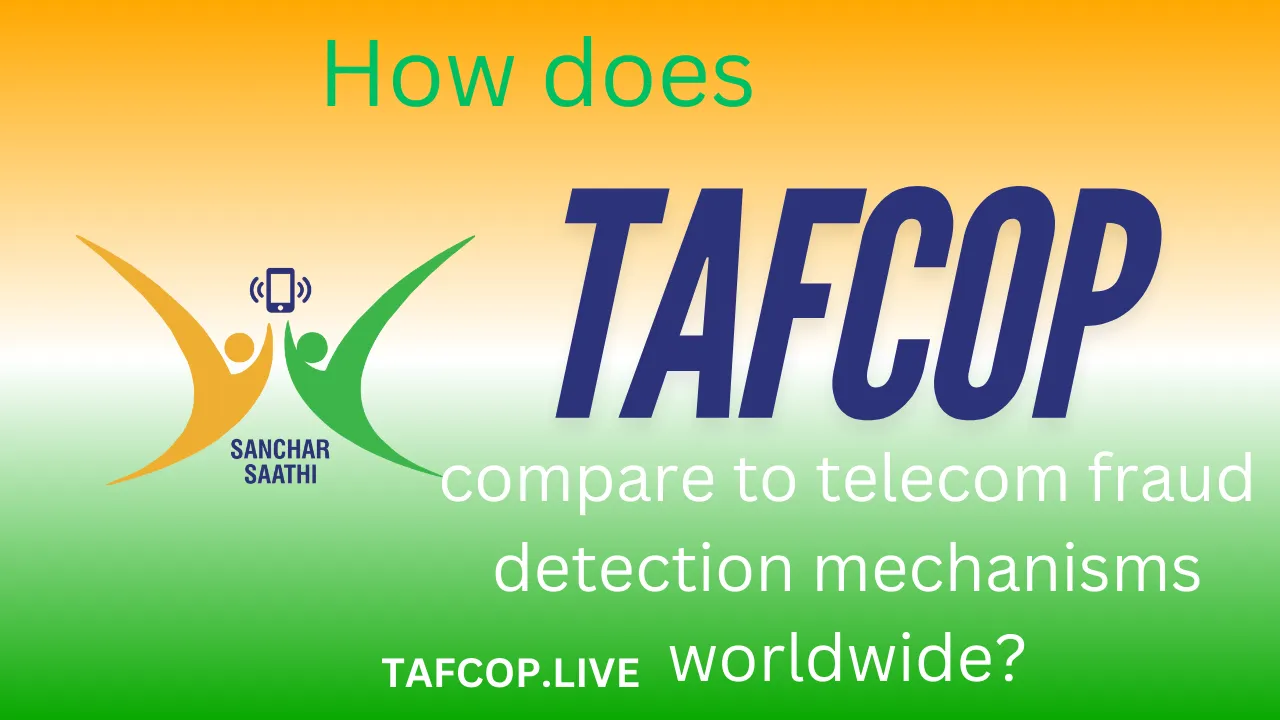Telecom fraud is a global menace, costing billions of dollars annually and affecting millions of users. In India, where mobile penetration is skyrocketing, the need for robust fraud detection mechanisms is more critical than ever. Enter TAFCOP—Telecom Analytics for Fraud Management and Consumer Protection. But how does it stack up against other fraud detection systems worldwide? Is it a game-changer, or just another tool in the arsenal? Let’s dive in and explore.
How does TAFCOP compare to telecom fraud detection mechanisms worldwide?
TAFCOP stands out globally by combining real-time analytics, AI-driven insights, and user-friendly interfaces to combat telecom fraud. Unlike many systems that focus solely on detection, TAFCOP also emphasizes consumer protection and transparency, making it a holistic solution for India’s telecom challenges.
What Makes TAFCOP Unique in the Global Telecom Fraud Landscape?
When it comes to telecom fraud detection, most systems focus on identifying suspicious activities after they’ve occurred. But TAFCOP takes a proactive approach. It doesn’t just detect fraud; it prevents it by analyzing patterns in real-time and alerting users before they fall victim.
For example, if a scammer tries to clone your SIM card or make unauthorized international calls, TAFCOP’s algorithms flag the activity instantly. This is a stark contrast to many global systems that rely on post-facto analysis, leaving users vulnerable until the damage is done.
Another standout feature is its consumer-centric design. While many fraud detection tools cater exclusively to telecom operators, TAFCOP empowers end-users by providing them with actionable insights. Imagine receiving a notification like, “Hey, we noticed an unusual call from an international number. Was this you?” That’s TAFCOP in action—putting the power back in your hands.
How Does TAFCOP Leverage AI and Machine Learning?
Artificial Intelligence (AI) and Machine Learning (ML) are the backbone of modern fraud detection systems, and TAFCOP is no exception. But what sets it apart is how it uses these technologies to adapt and evolve.
Most systems rely on predefined rules to flag fraud. For instance, if a call exceeds a certain duration or originates from a high-risk country, it’s marked as suspicious. While this works to some extent, it’s not foolproof. Scammers are constantly finding new ways to bypass these rules.
TAFCOP, on the other hand, uses self-learning algorithms that improve over time. It analyzes vast amounts of data—call records, user behavior, geographic patterns—and identifies anomalies that even the most sophisticated rule-based systems might miss.
For example, if a scammer starts using a new technique, like spoofing local numbers, TAFCOP’s AI can detect the unusual pattern and flag it, even if it doesn’t match any existing rules. This adaptive capability makes it a formidable tool in the fight against telecom fraud.
How Does TAFCOP Ensure Consumer Protection?
One of the biggest challenges in telecom fraud is ensuring that consumers are not just informed but also protected. Many fraud detection systems focus solely on the technical side, leaving users in the dark. TAFCOP flips the script by prioritizing transparency and education.
Here’s how it works:
- Real-Time Alerts: Users receive instant notifications about suspicious activities, allowing them to take immediate action.
- Self-Service Portal: TAFCOP provides a user-friendly portal where consumers can monitor their usage, report fraud, and even block suspicious numbers.
- Educational Campaigns: TAFCOP regularly shares tips and updates on the latest fraud trends, helping users stay one step ahead of scammers.
This consumer-first approach is rare in the global telecom fraud landscape, where most systems are designed for operators rather than end-users.
How Does TAFCOP Compare to Systems in the US and Europe?
When we look at fraud detection mechanisms in the US and Europe, we see a mix of advanced technologies and regulatory frameworks. For instance, the US relies heavily on blockchain-based solutions to secure telecom networks, while Europe emphasizes GDPR compliance to protect user data.
But here’s where TAFCOP shines: it combines the best of both worlds. Like the US, it leverages cutting-edge technologies like AI and ML. And like Europe, it prioritizes user privacy and data protection. However, TAFCOP goes a step further by addressing the unique challenges of the Indian market, such as SIM cloning and spoofing.
For example, in India, where SIM card fraud is rampant, TAFCOP’s ability to detect and prevent SIM cloning in real-time is a game-changer. In contrast, many US and European systems are still catching up in this area.
What Are the Limitations of TAFCOP?
No system is perfect, and TAFCOP is no exception. While it excels in many areas, it does have some limitations. For instance, its effectiveness depends heavily on user participation. If users don’t report fraud or ignore alerts, the system’s ability to prevent future incidents is compromised.
Another challenge is scalability. While TAFCOP works well in India’s densely populated urban areas, extending its reach to rural regions with limited connectivity remains a hurdle.
That said, these limitations are not unique to TAFCOP. They are common challenges faced by fraud detection systems worldwide. The key is to continuously improve and adapt, which TAFCOP is doing through regular updates and collaborations with telecom operators.
FAQs
1. How does TAFCOP detect SIM cloning?
TAFCOP uses AI-driven pattern recognition to identify unusual activities, such as multiple SIM activations from the same device, and alerts users in real-time.
2. Is TAFCOP available to all telecom users in India?
Yes, TAFCOP is designed to work across all major telecom operators in India, ensuring widespread accessibility.
3. Can TAFCOP prevent international call scams?
Absolutely. TAFCOP’s algorithms flag suspicious international calls and notify users immediately, allowing them to block such numbers.
4. How does TAFCOP protect user data?
TAFCOP adheres to strict data protection protocols, ensuring that user information is encrypted and accessible only to authorized personnel.
Conclusion
In the battle against telecom fraud, TAFCOP stands out as a beacon of innovation and consumer empowerment. By combining advanced technologies with a user-centric approach, it not only detects fraud but also prevents it, setting a new standard for telecom security worldwide. While it has its limitations, its ability to adapt and evolve makes it a powerful tool in India’s fight against telecom fraud. As scammers grow more sophisticated, systems like TAFCOP remind us that the best defense is a proactive, informed, and empowered user base.
So, the next time you receive a suspicious call or text, remember: TAFCOP has your back

